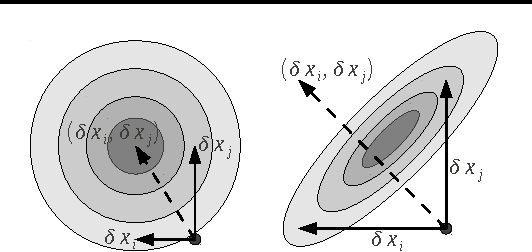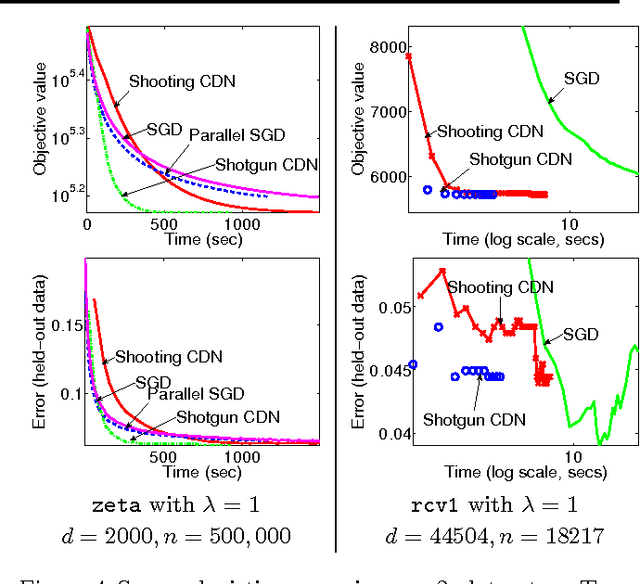Aapo Kyrola
Accurate, Large Minibatch SGD: Training ImageNet in 1 Hour
Apr 30, 2018



Abstract:Deep learning thrives with large neural networks and large datasets. However, larger networks and larger datasets result in longer training times that impede research and development progress. Distributed synchronous SGD offers a potential solution to this problem by dividing SGD minibatches over a pool of parallel workers. Yet to make this scheme efficient, the per-worker workload must be large, which implies nontrivial growth in the SGD minibatch size. In this paper, we empirically show that on the ImageNet dataset large minibatches cause optimization difficulties, but when these are addressed the trained networks exhibit good generalization. Specifically, we show no loss of accuracy when training with large minibatch sizes up to 8192 images. To achieve this result, we adopt a hyper-parameter-free linear scaling rule for adjusting learning rates as a function of minibatch size and develop a new warmup scheme that overcomes optimization challenges early in training. With these simple techniques, our Caffe2-based system trains ResNet-50 with a minibatch size of 8192 on 256 GPUs in one hour, while matching small minibatch accuracy. Using commodity hardware, our implementation achieves ~90% scaling efficiency when moving from 8 to 256 GPUs. Our findings enable training visual recognition models on internet-scale data with high efficiency.
GraphLab: A New Framework For Parallel Machine Learning
Aug 09, 2014



Abstract:Designing and implementing efficient, provably correct parallel machine learning (ML) algorithms is challenging. Existing high-level parallel abstractions like MapReduce are insufficiently expressive while low-level tools like MPI and Pthreads leave ML experts repeatedly solving the same design challenges. By targeting common patterns in ML, we developed GraphLab, which improves upon abstractions like MapReduce by compactly expressing asynchronous iterative algorithms with sparse computational dependencies while ensuring data consistency and achieving a high degree of parallel performance. We demonstrate the expressiveness of the GraphLab framework by designing and implementing parallel versions of belief propagation, Gibbs sampling, Co-EM, Lasso and Compressed Sensing. We show that using GraphLab we can achieve excellent parallel performance on large scale real-world problems.
Distributed GraphLab: A Framework for Machine Learning in the Cloud
Apr 26, 2012



Abstract:While high-level data parallel frameworks, like MapReduce, simplify the design and implementation of large-scale data processing systems, they do not naturally or efficiently support many important data mining and machine learning algorithms and can lead to inefficient learning systems. To help fill this critical void, we introduced the GraphLab abstraction which naturally expresses asynchronous, dynamic, graph-parallel computation while ensuring data consistency and achieving a high degree of parallel performance in the shared-memory setting. In this paper, we extend the GraphLab framework to the substantially more challenging distributed setting while preserving strong data consistency guarantees. We develop graph based extensions to pipelined locking and data versioning to reduce network congestion and mitigate the effect of network latency. We also introduce fault tolerance to the GraphLab abstraction using the classic Chandy-Lamport snapshot algorithm and demonstrate how it can be easily implemented by exploiting the GraphLab abstraction itself. Finally, we evaluate our distributed implementation of the GraphLab abstraction on a large Amazon EC2 deployment and show 1-2 orders of magnitude performance gains over Hadoop-based implementations.
* VLDB2012
GraphLab: A Distributed Framework for Machine Learning in the Cloud
Jul 05, 2011



Abstract:Machine Learning (ML) techniques are indispensable in a wide range of fields. Unfortunately, the exponential increase of dataset sizes are rapidly extending the runtime of sequential algorithms and threatening to slow future progress in ML. With the promise of affordable large-scale parallel computing, Cloud systems offer a viable platform to resolve the computational challenges in ML. However, designing and implementing efficient, provably correct distributed ML algorithms is often prohibitively challenging. To enable ML researchers to easily and efficiently use parallel systems, we introduced the GraphLab abstraction which is designed to represent the computational patterns in ML algorithms while permitting efficient parallel and distributed implementations. In this paper we provide a formal description of the GraphLab parallel abstraction and present an efficient distributed implementation. We conduct a comprehensive evaluation of GraphLab on three state-of-the-art ML algorithms using real large-scale data and a 64 node EC2 cluster of 512 processors. We find that GraphLab achieves orders of magnitude performance gains over Hadoop while performing comparably or superior to hand-tuned MPI implementations.
Parallel Coordinate Descent for L1-Regularized Loss Minimization
May 26, 2011



Abstract:We propose Shotgun, a parallel coordinate descent algorithm for minimizing L1-regularized losses. Though coordinate descent seems inherently sequential, we prove convergence bounds for Shotgun which predict linear speedups, up to a problem-dependent limit. We present a comprehensive empirical study of Shotgun for Lasso and sparse logistic regression. Our theoretical predictions on the potential for parallelism closely match behavior on real data. Shotgun outperforms other published solvers on a range of large problems, proving to be one of the most scalable algorithms for L1.
 Add to Chrome
Add to Chrome Add to Firefox
Add to Firefox Add to Edge
Add to Edge